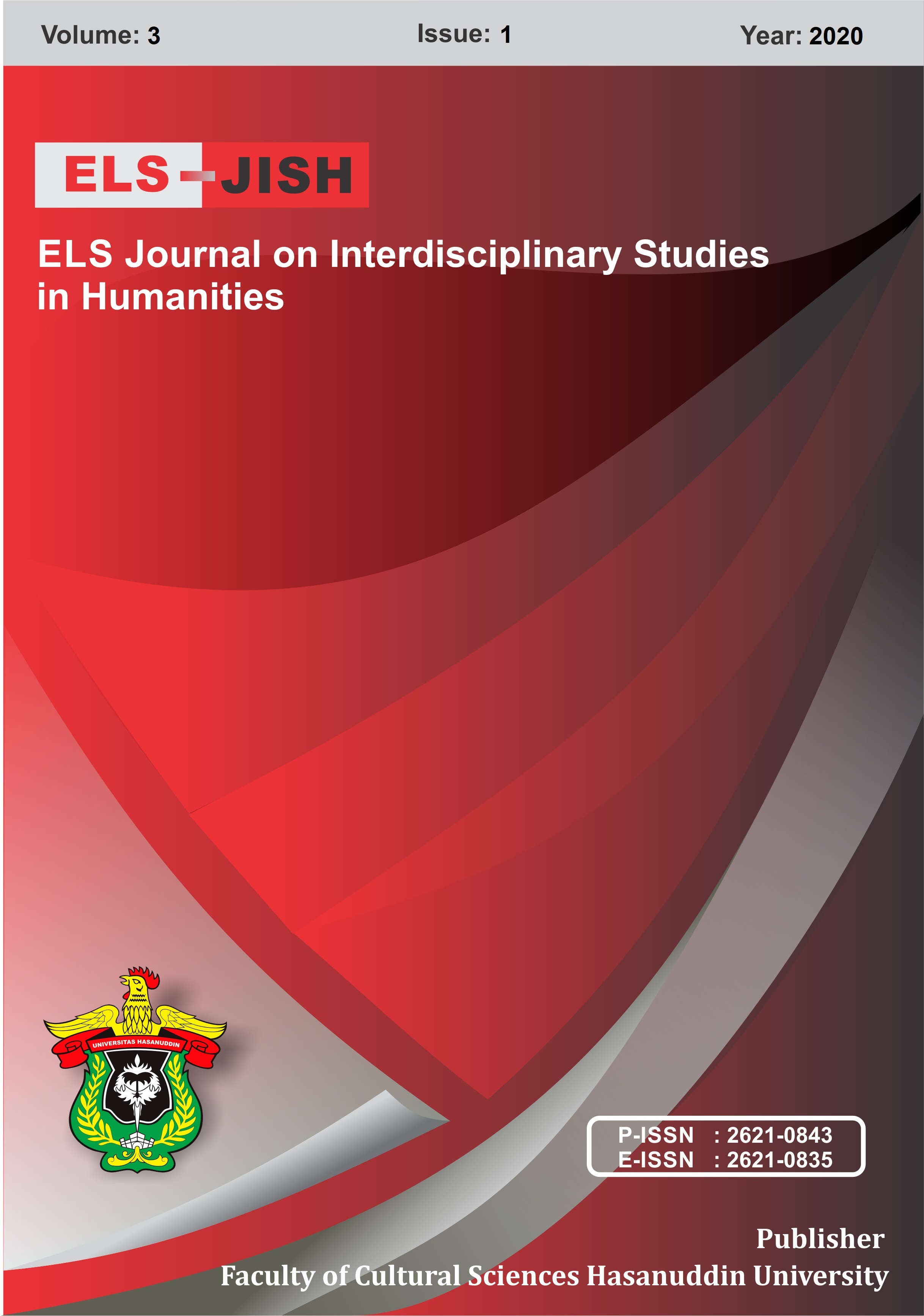Native English Teacher’s Politeness Realizations in EFL Classroom Interaction
DOI:
https://doi.org/10.34050/els-jish.v3i1.9524Keywords:
Politeness strategies, Language teaching, Teacher’s talk, Speech actsAbstract
The realizations of politeness need to be implemented in the process of teaching and learning in the class, especially in English language classroom context. Applying appropriate politeness strategy in talking to the students is very important to create effective teaching and learning process. This study examines politeness strategies used by the native English teacher. It aims to identify the use of politeness strategies realized by the native English teacher in classroom interaction. This research was qualitative research method. The participant of the research was one native English teacher who taught EFL students in a university in Indonesia. The data were obtained through the class observation. Those data then were analyzed by using politeness theory proposed by Brown and Levinson (1987). The result revealed that all politeness strategies suggested by Brown and Levinson (1987) were applied by the teacher in delivering his speech to the students, such as bald on record, positive politeness, negative politeness, and off record. Negative politeness became the most dominant politeness strategy performed by the native English teacher while the least one was off record. These four strategies were mostly employed by the teacher in order to remind the students, give them commands (task-oriented), praise the students, request the students to do something, make the class more interesting, and motivate the students.Downloads
Download data is not yet available.
Downloads
Published
2020-03-28
How to Cite
Wijayanti, W., Wijayanto, A., & Marmanto, S. (2020). Native English Teacher’s Politeness Realizations in EFL Classroom Interaction. ELS Journal on Interdisciplinary Studies in Humanities, 3(1), 31-40. https://doi.org/10.34050/els-jish.v3i1.9524
Issue
Section
Articles

















